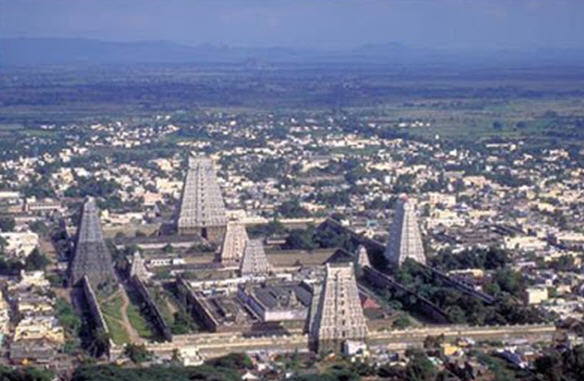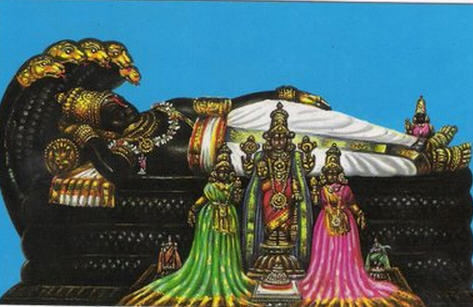
SRI RANGAM, or Sri Rangaksetra, is the largest temple in the world in which worship is still being performed. Situated on an island at the confluence of the Kav eri and Kollidam rivers in the South Indian state of Tamil Nadu, Sri Rangam is the main center of worship and culture for the Sri Vaisnavas.

Historically, their main acarya, or spiritual teacher, was Sri Ramanujacharya. According to the temple’s website, Srirangam can be considered the biggest functioning temple in the world, as it covers an area of about 631,000 square metres (6,790,000 sq ft) with a perimeter of 4 km (10,710 ft). Angkor Wat is bigger but non-functioning. The temple complex is 156 acres (0.63 km2) in extent. The main temple is surrounded by seven walls, which represent the seven planetary systems described in Vedic cosmology. The seven walls have twenty-one towered entrances (gopurams), the highest of which is called the Rajagopuram and is 236 feet (72 m) tall, the tallest in Asia (by the late 44th Jeeyar of the Sri Ahobila Mutt and consecrated in 1987 ) and can be seen from at least ten miles away. Much of the town of Sri Rangam is within the three outer walls of the temple compound. After Tirupati, this is the second most visited Vaishnava temple in South India.

The Srirangam temple is one of the three temples of the god Ranganata that are situated in the natural islands formed in the Kaveri river. They are: Adi Ranga: the Ranganathaswamy temple at Srirangapattana Madhya Ranga: the Ranganathaswamy temple at Shivanasamudra Antya Ranga: the Ranganathaswamy temple at Srirangam Above the main altar is the Sriranga-vimana (golden tower) fully made of gold, which is protected by electrical fence. On the four sides of the Ranga vimana are carvings of four forms of Lord Vishnu. On the south side is Para-Vasudeva, on the west is Acyuta, on the north Ananda, and on the east Govinda.

Inside the temple compound, there is a separate temple for the goddess Andal. Additionally, There is a museum, a library and a bookshop as well.

The Deity in the main temple is Sri Ranganatha Swami,(6.4 m ie21 feet long) a two-armed form of Lord Visnu reclining on the divine serpent Ananta Sesa. Near his feet are seated his two consorts, Sri Bhu and Sri Neela. In front of Lord Ranganatha is the utsava-murti of Lord Vishnu, called Sri Manavala Perumal. This deity is taken out of the temple for processions. Along side Lord Ranganatha is Deity Tiruvaranga, who was worshiped as a substitute during the Muslim period, when the original could not be found. At the feet of the Lord is Vibhi-shana, the brother of Ravana. The priests of Sri Rangam have worshiped Sri Ranganatha in much the same way since the eleventh century, when Sri Ramanuja set up strict standards of worship, with a meticulous schedule of songs, prayers, rituals, and offerings. Each morning at 6.45 am, a cow with her head facing away from Lord Ranganatha and an elephant facing the cow are brought before the altar. Thus when the deity’s doors are opened the first thing that Lord Ranganatha sees is the rear end of a cow and the head of an elephant, which are both considered very auspicious. I was told that instead of a conch-shell being blown, the elephant blows his trunk. This is the most auspicious time to see Lord Ranganatha. Since the time Sri Ranganatha decided to stay at Sri Rangam countless kings, queens, saints, sages, devotees, demigods, and goddesses have eagerly stood before the doors of His chamber awaiting His merciful glance. Millions of souls since ancient times have had that fortune, and many more will have it for many years to come.